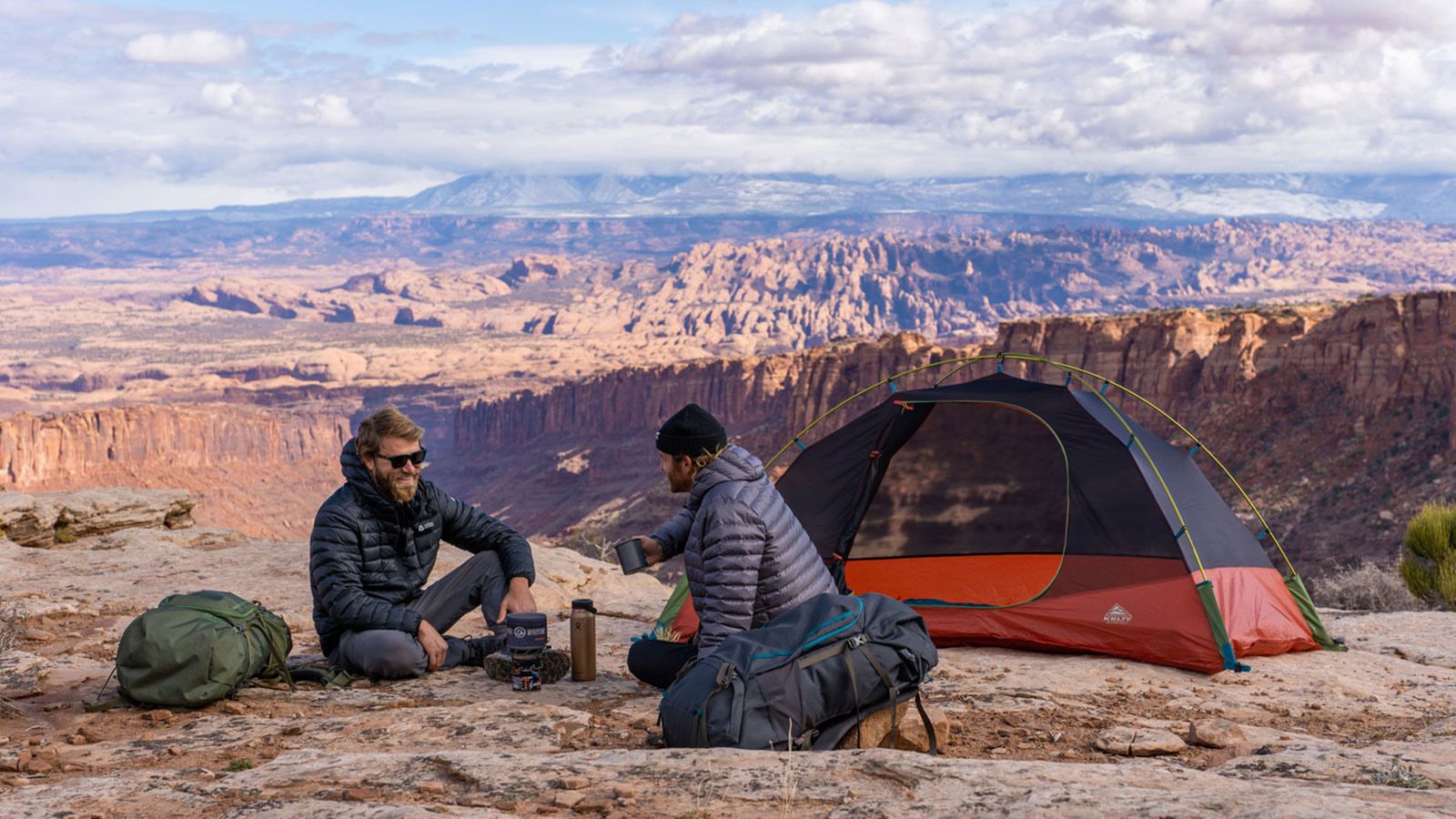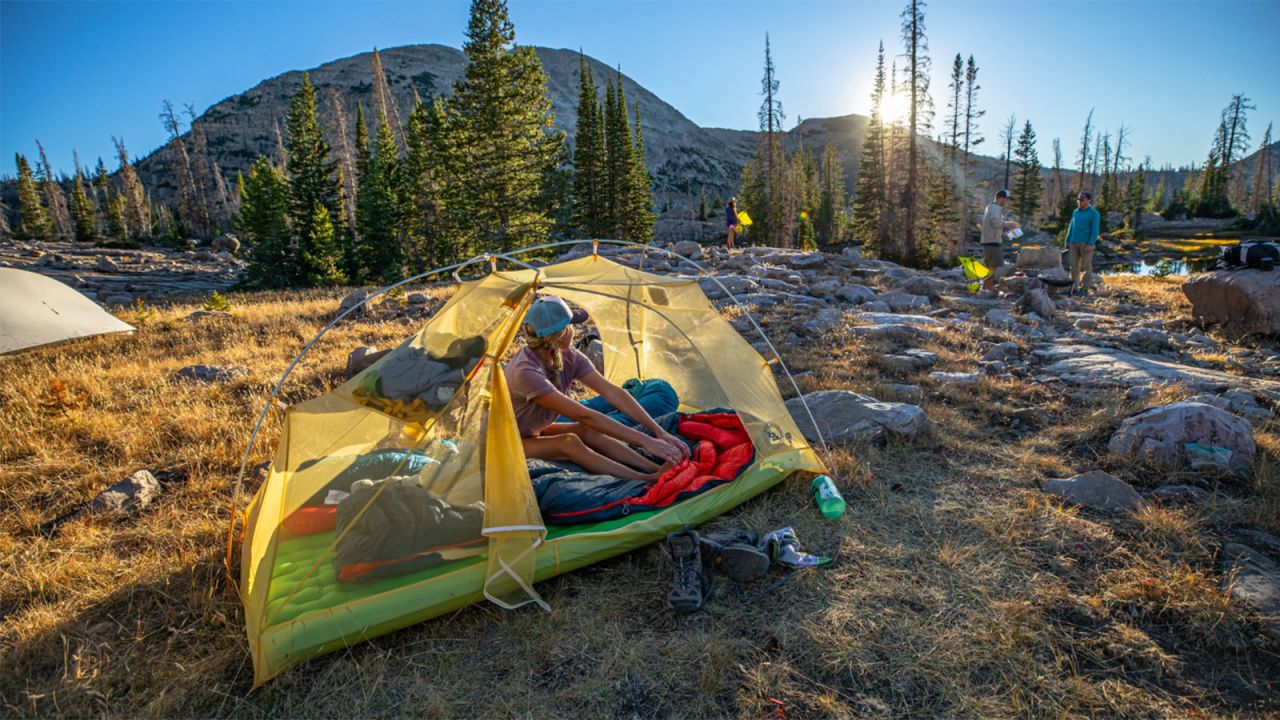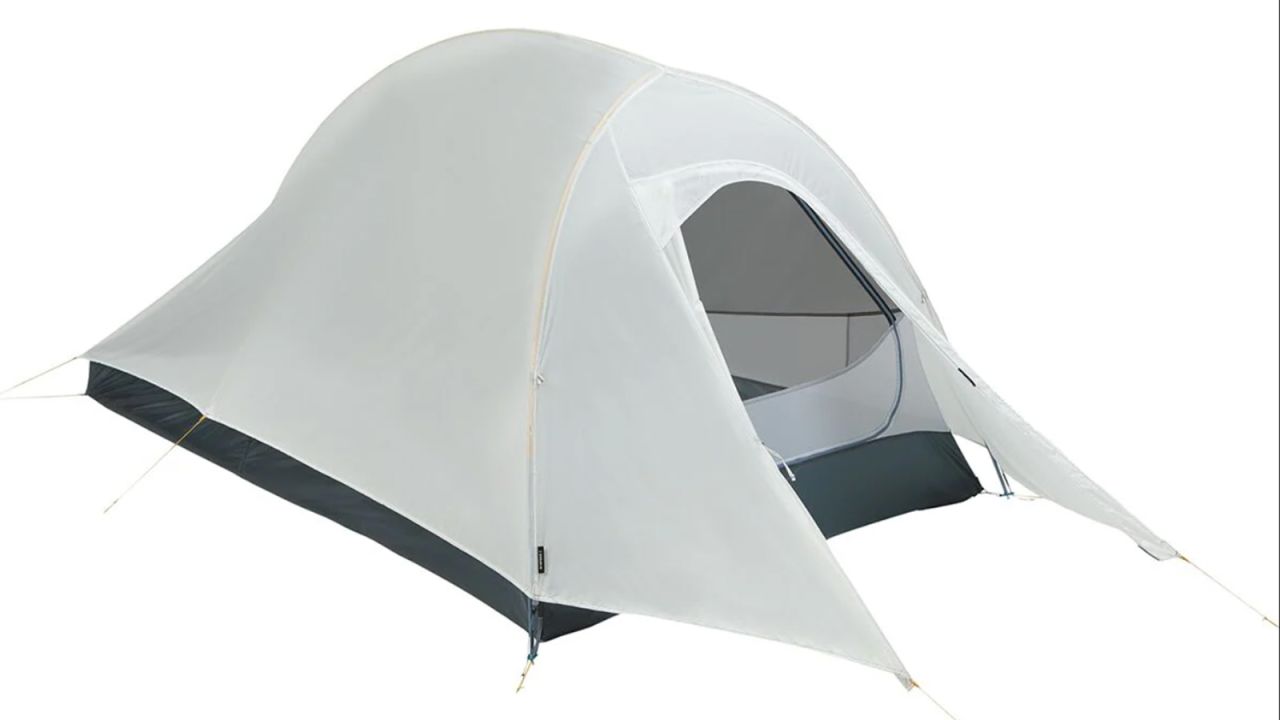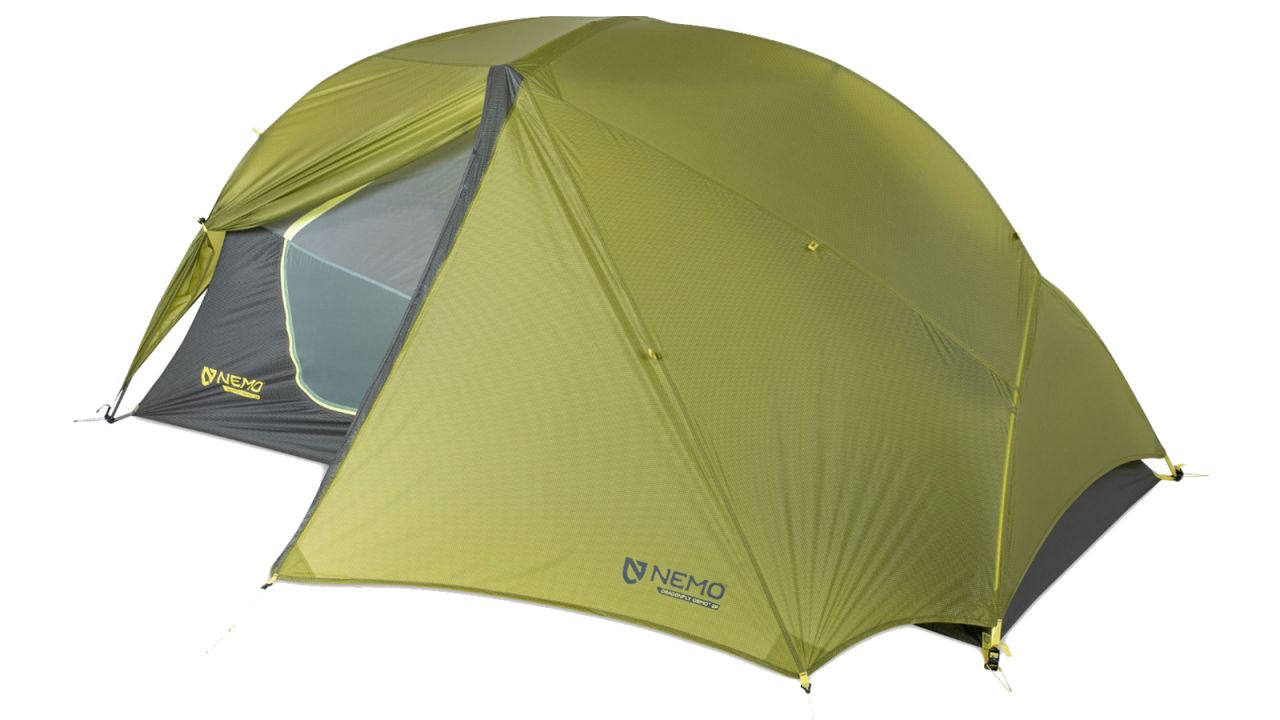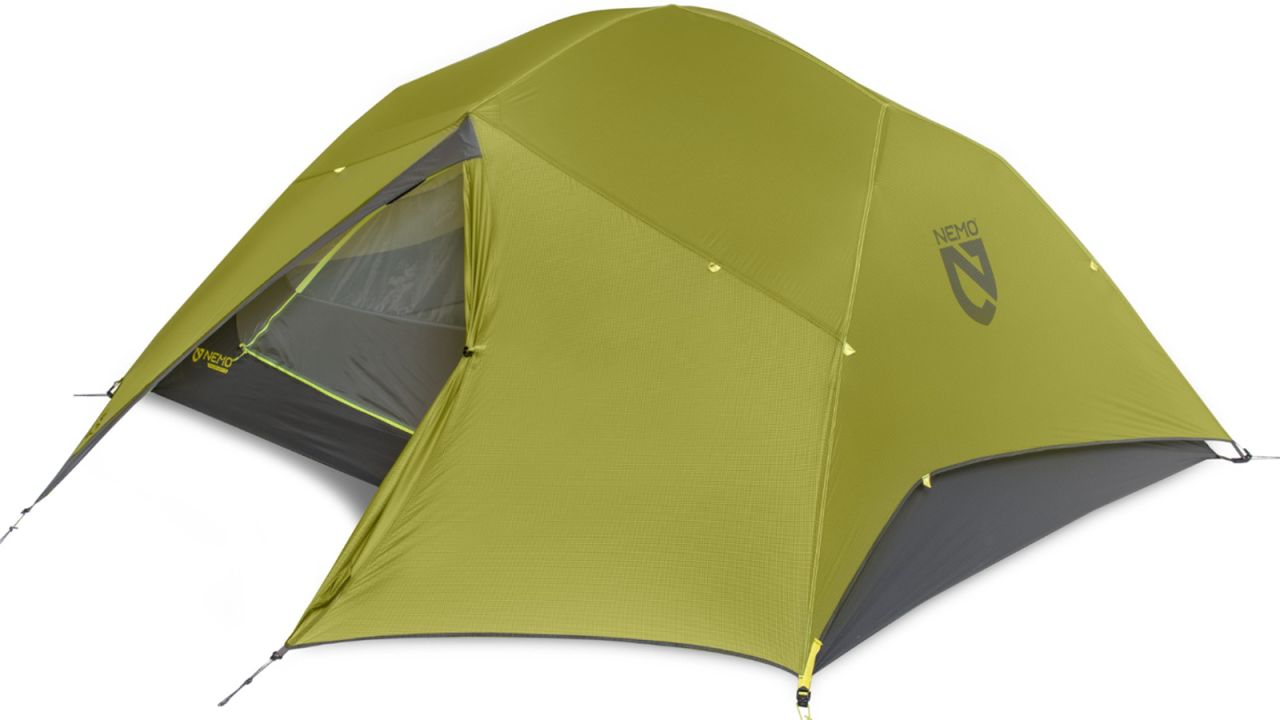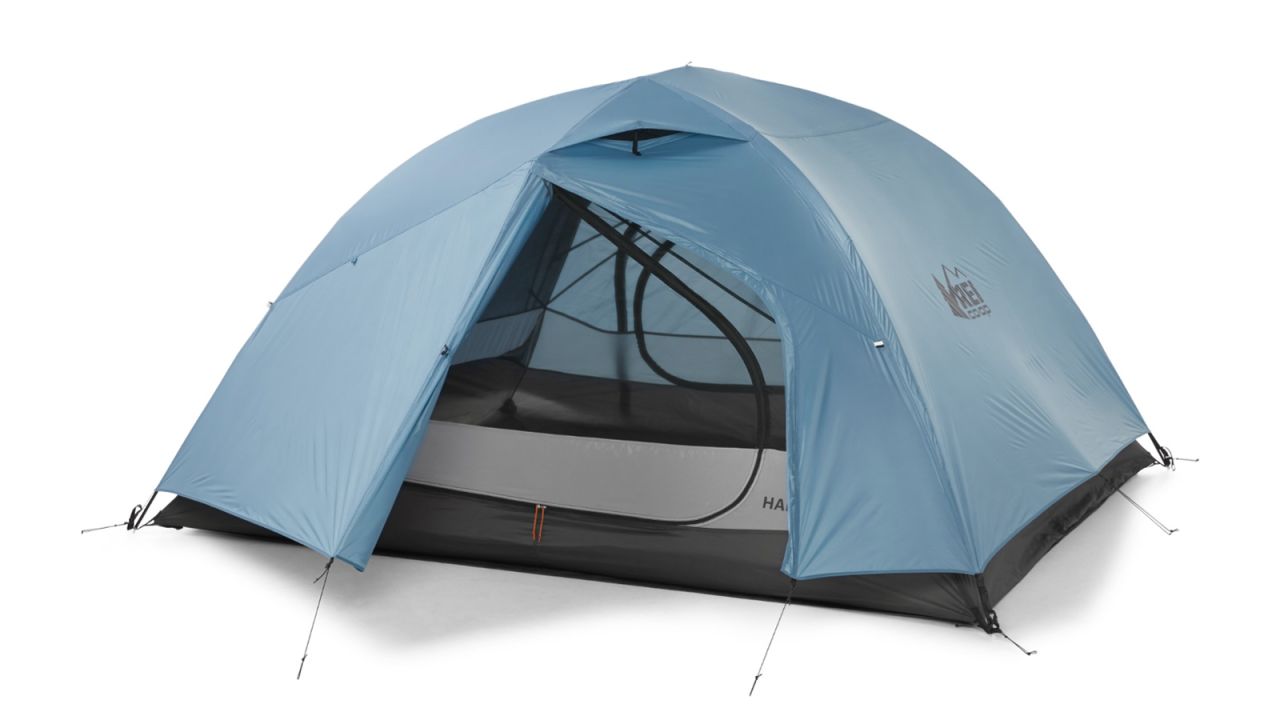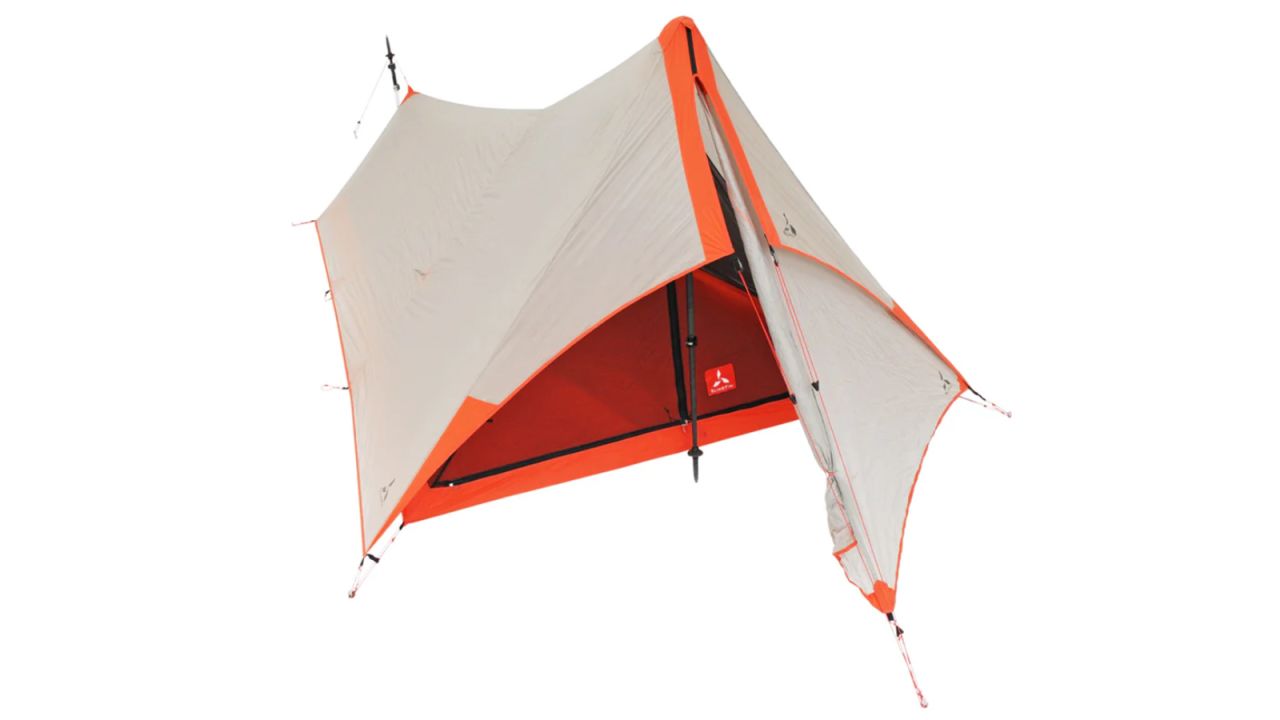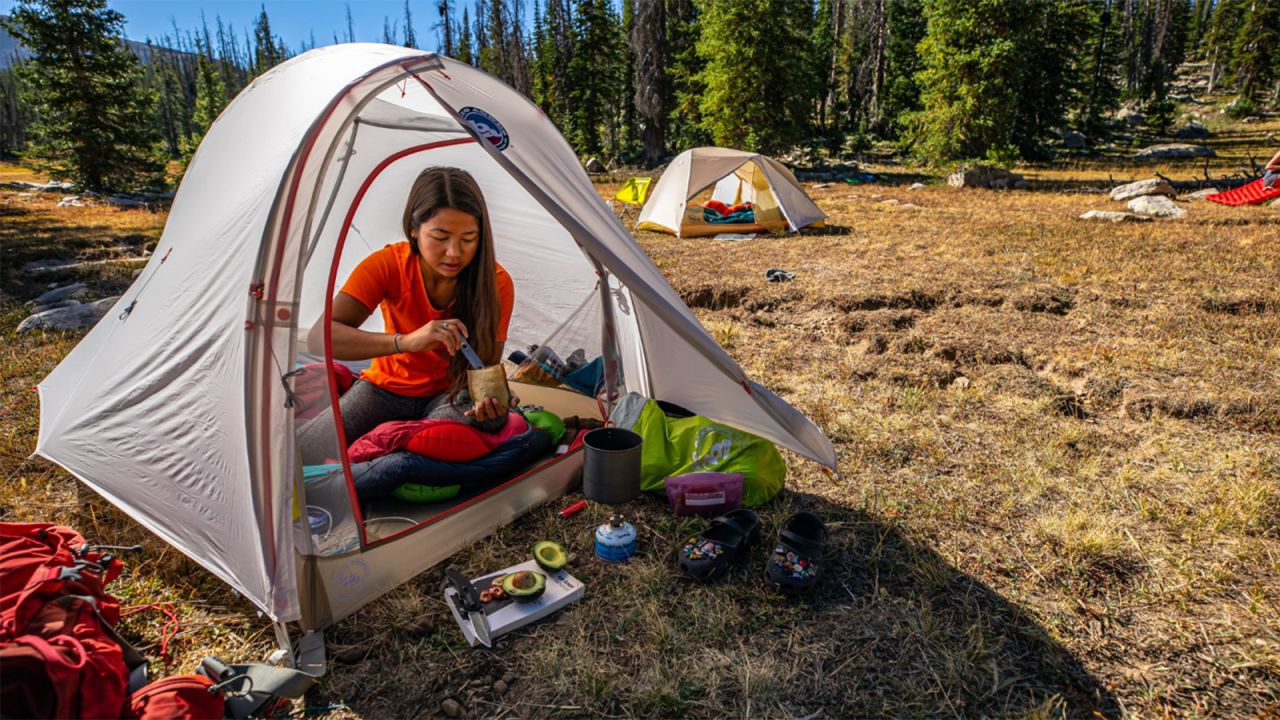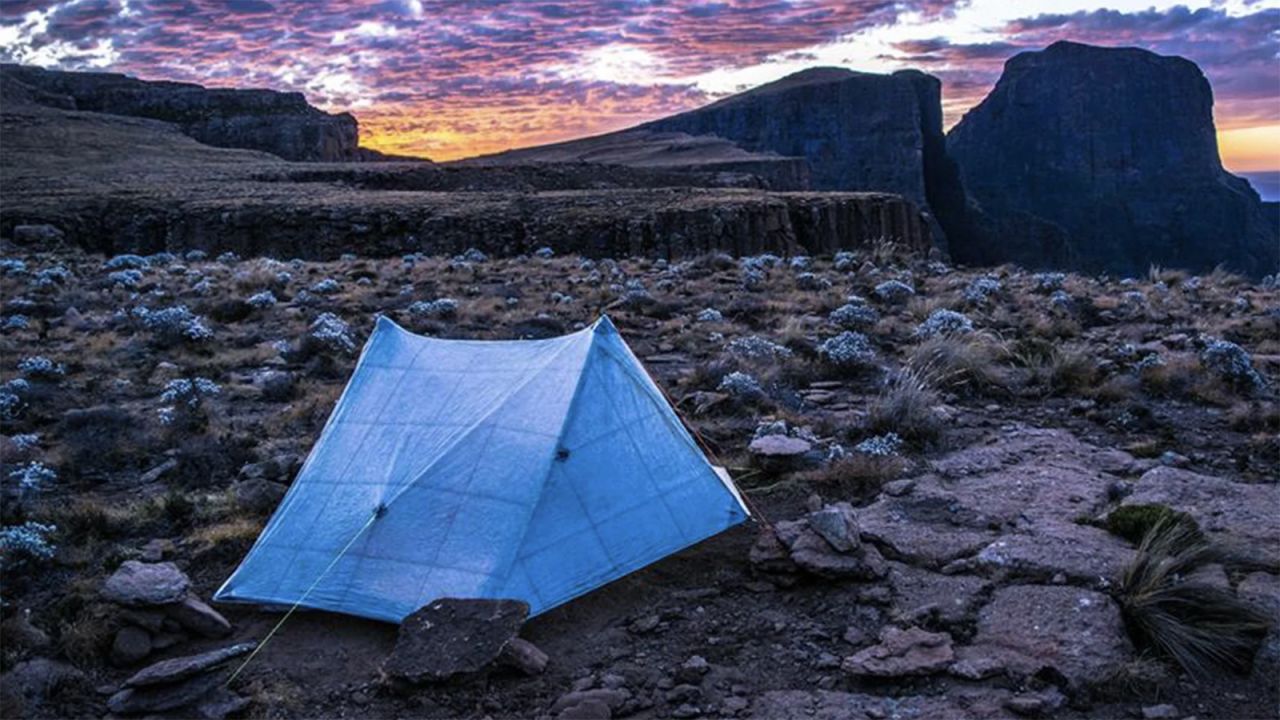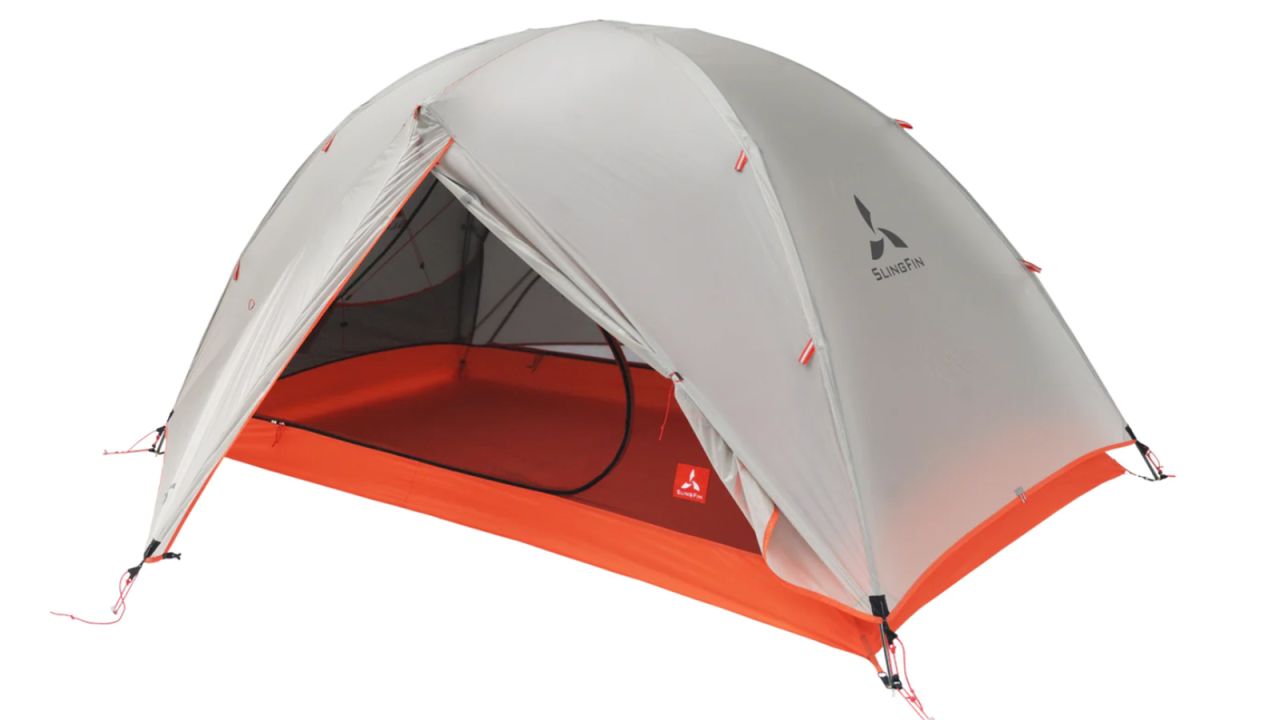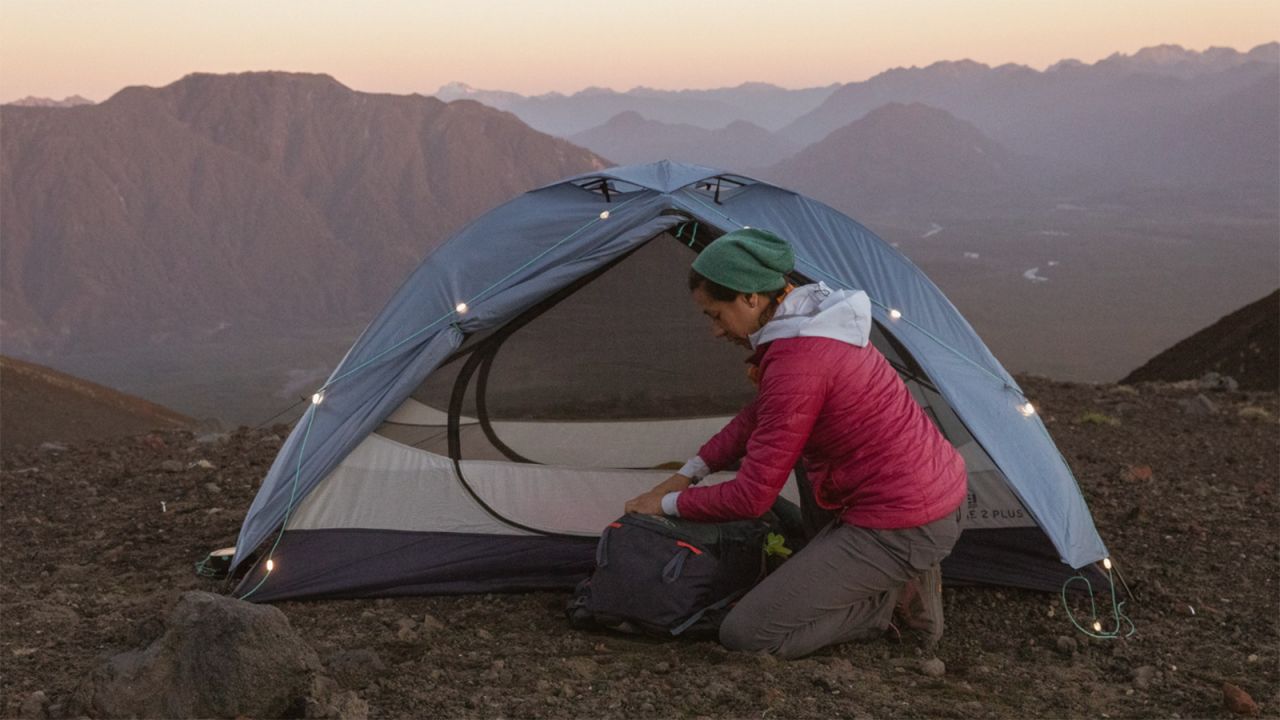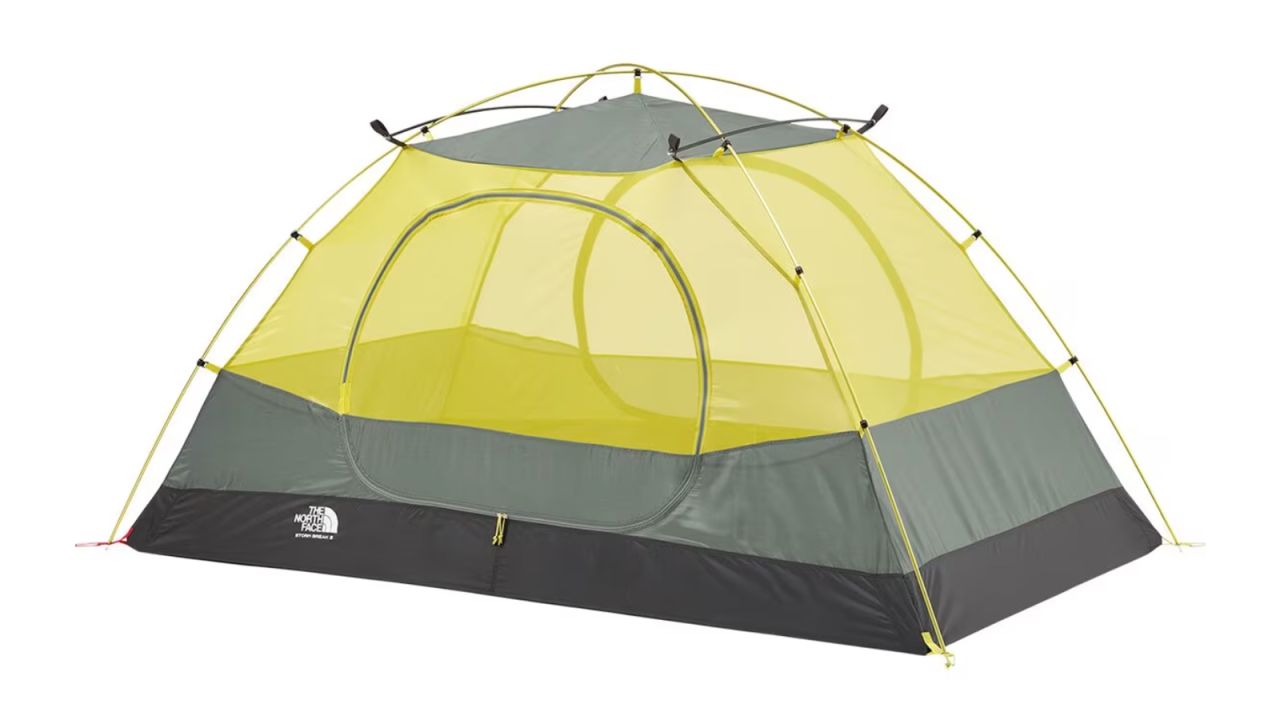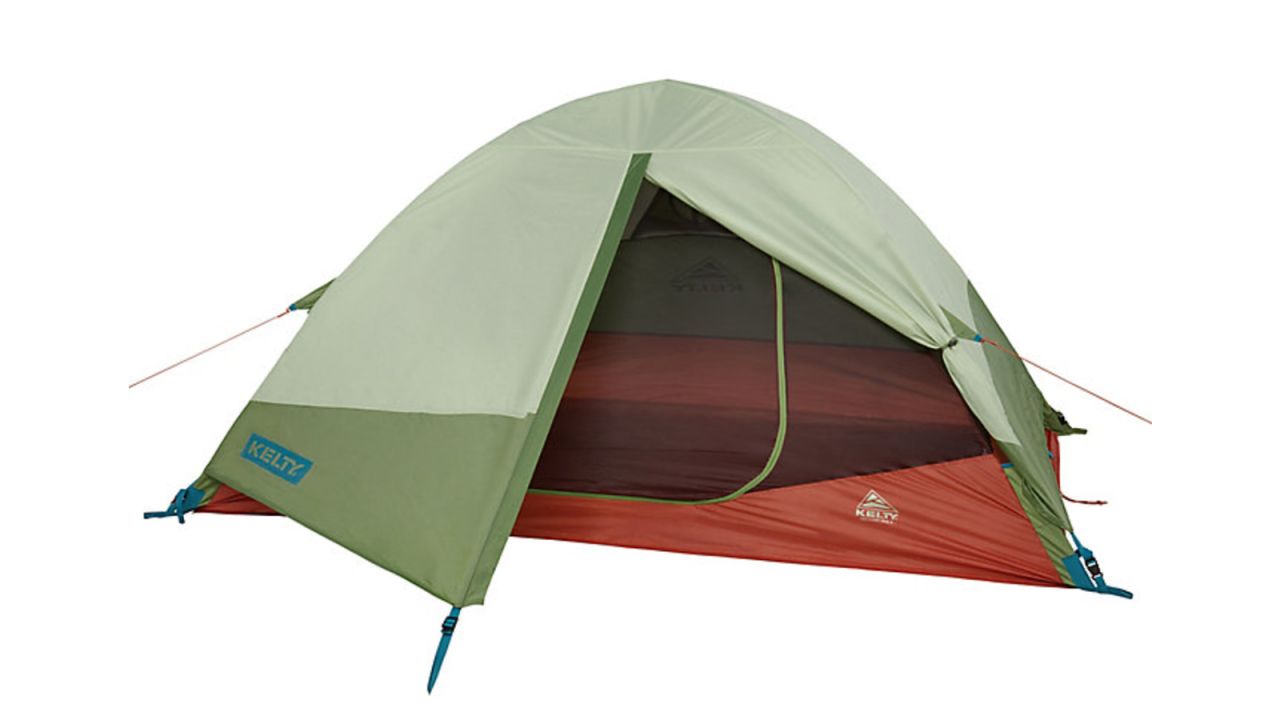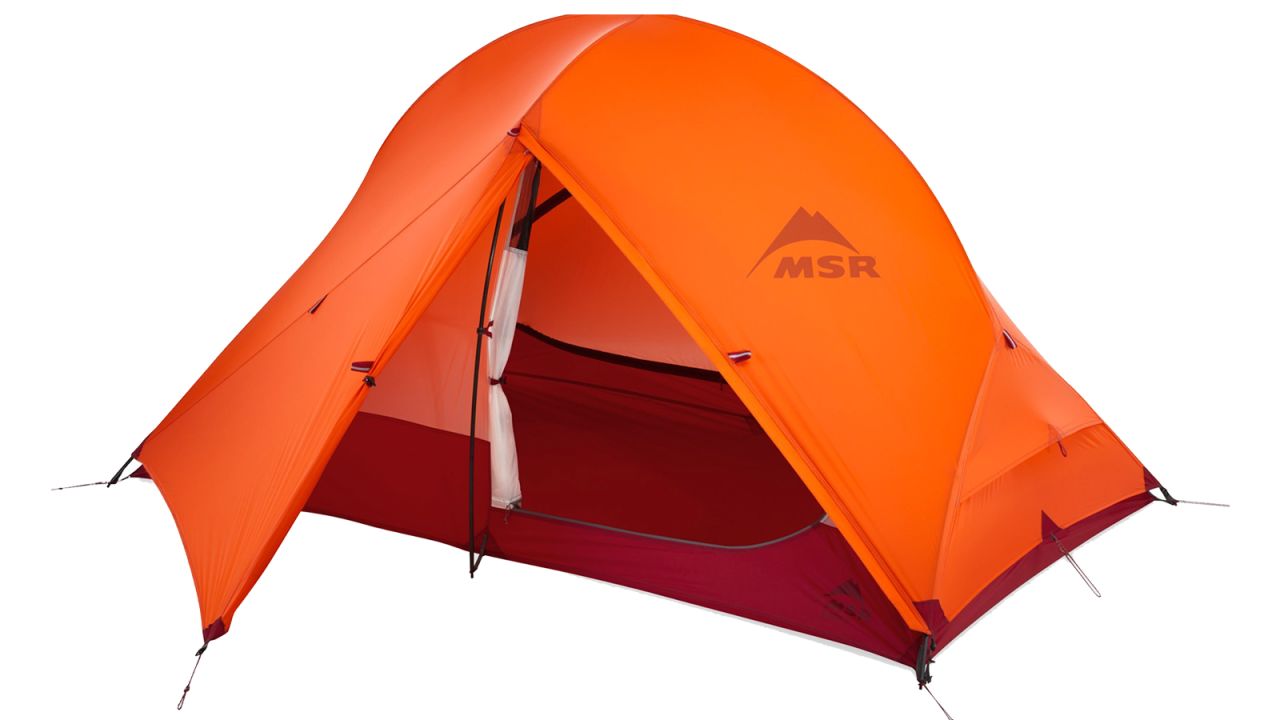Choosing a solid tent for when you’re trekking in the wilderness can be one of the most nerve-racking parts of getting into backpacking. Not only is it likely the most expensive piece of gear in your quiver, those thin walls of nylon are very likely the only thing standing between you and the elements when an afternoon thunderstorm rolls in or a chilly draft blows through the red rock canyon.
Luckily, there are loads of fantastic options on the market today, designed to fit every kind of hiker. Planning your first-ever overnight with your kids in a national park? There’s a tent for that. Heading out for a gnarly backcountry ski weekend? There’s a tent for that, too.
“There are several factors to consider before you buy an ultralight tent, including: length of trips (overnights, multi-day and/or thru-hikes), whether you’re sleeping solo or with a tent-mate/family/dog, what type of weather may you encounter and your budget,” says Bill Gamber, co-founder and president of Big Agnes.
With those stats in mind, we hit the trail, scoured review sites and interviewed our favorite outdoor experts to uncover the top lightweight camping tents in every category. We also built out a handy guide of things to look for before you spend big on a new shelter.
What to consider when purchasing a backpacking tent
Weight
“A solo AT thru-hiker has different priorities than a couple on a weekend excursion,” says Gabi Rosenbrien, product development manager for Nemo. While the former might forgo extra pockets, peak height and double doors in favor of shaving off a few ounces, the latter might happily pack out an extra pound or two to stay cozy and headache-free on their journey.

Weight and durability often go hand-in-hand on the trail, and many of the lightest-weight tents in our lineup are made with paper-thin fabric that needs to be babied a little to provide the longevity of a more durable, slightly heavier structure. If you’re aiming to count grams and go hyper-light, consider investing in a solid footprint to protect your tent’s delicate floor.
I once met a Zion park ranger in India (small world) who told me that a good rule of thumb, if you’ve got the money, is to never buy a two-person tent that’s over 4 pounds. It’s astonishingly simple advice that has stuck with me on every tent purchase since.
Capacity
Are you planning to bring along your partner and a 75-pound dog? Or just heading out to brave some sunny weather on your own? Staying mindful of who you’ll likely be using your tent with (and how much space they’ll want to spread out) is key when it comes to finding the right tent.
It’s also crucial to bear in mind things like peak height, floor area and vestibule space if you’re tall or know that you prefer to change inside the tent, as opposed to, say, behind a tree. Many ultralight tents offer just enough room for two standard-size sleeping pads to sit next to each other, but if you often camp in drizzly or cold conditions, you might consider sizing up to allow for more gear storage inside.
Wind and weather protection
These days, most tents (especially freestanding ones) come with a weather-proof rainfly and loads of extra guy-out points for maintaining tension at key points along the fabric so that water slides off with ease and doesn’t accumulate. That being said, not all rainfly fabric is created equal. Waterproof ratings vary from 800mm to 10,000mm (a metric that lets you know how much water pressure the fabric can withstand), and four-season tents tend to use higher-rated materials than standard issue three-season fare.

Pole construction and materials are also key to a tent’s ability to withstand wind storms and snow-loading. Most are made with lightweight aluminum, but the thicker the pole diameter, the more weight you’ll be adding to your pack. “Pole architectures and materials tend to vary across brands and intended use,” says Rosenbrien, “so try to check out the tent in person or find a rental program before making a purchase.”
Sustainability
Paying attention to sustainability initiatives is also important if you’re concerned about the human and ecological impact of your camping excursions. Some fabrics are made with either eco-friendly dyes or a percentage of recycled materials. A mention of Bluesign approval is also a marker of ethical textile creation, ensuring that at least some of the raw goods used are safe for the environment, factory workers and consumers.
Freestanding vs. semi-freestanding vs. tarp tents
An ongoing trend, especially among long distance thru-hikers, is the rise of super-light tent-tarp hybrids and semi-freestanding tents that require a bit of pliable dirt or sand to stake-out the hut’s corners.
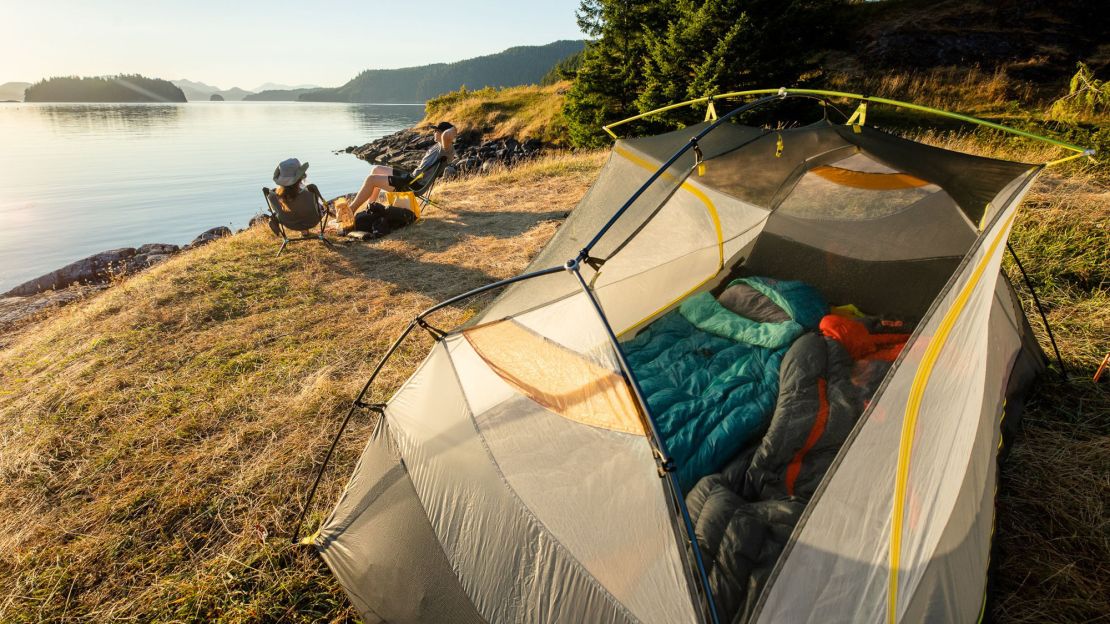
By cutting features like snap-together tent poles in favor of trekking-pole-oriented setups, these tents can offer phenomenal weight savings while providing the roomy interior space and waterproofness that you’d expect from their heavier cousins. There is, however, one catch.
Semi-freestanding tents are nearly impossible to pitch without a large area of firm dirt to stake them out in, which makes these shelters a frustrating option if you like to camp on slick rock or in the high alpine, where boulder fields and granite slabs rule.
Price
Of course, none of these high-tech features come cheap. “Overall weight, packed size, overall footprint, tent length/peak height, vestibule size, fabric strength and number of doors” are also important things to consider, according to Gamber, and there’s no magical one-tent-fits-all solution.
We made sure to include a list of our favorite wallet-friendly tents that are big on creature comforts and still light enough to take far into the backcountry in your favorite public lands.
The best lightweight backpacking tents for every kind of camper
We reached out to a handful of our favorite outdoor adventurers and gear experts to get their hot takes on what the best backpacking tents were, then split the findings into a variety of categories. Whether you’re trying to save weight or dollars, there’s sure to be a tent that’ll make you smile below.
Best all-around
This two-person shelter weighs in at a feather-light 2.5 pounds and packs down to an ultra-compact size, making it ideal for backpacking trips, alpine climbs or bikepacking adventures. The tent features a solution-dyed fabric that reduces water and energy consumption during manufacturing and increases UV resistance. Ezgi Kunttas, a lead organizer for Caltech’s Alpine Club, also loves the plethora of easy-stash mesh storage pockets. “The all-mesh top also allows for excellent stargazing opportunities,” she says. The tent comes with a footprint, stakes, guylines and repair kit for added value and longevity.
According to author and adventurer Heidi Love, the Mountain Hardwear Nimbus UL 2 is a no-brainer for easy overnights. “[It’s] lightweight, packs down really small, has a nice vestibule and is sturdy and made well for the weight,” she explains. This two-person, single-door tent weighs only 2 pounds and packs down to roughly the size of a water bottle. The single-pole design makes setup a snap, while the vestibule offers easy access and rain-free storage space. Most importantly, the interior has just enough room for you and your partner (if you don't mind getting cozy).
Hailing from far-north Sweden, Hilleberg offers bomber tent designs that can withstand any weather. When a storm’s brewing, Love mentioned that she turns to her trusty Hilleberg Anjan for its breathability and storm-resistance. “From deluges in rainy Nova Scotia, to cold temps in the Alps, to harsh conditions in Turkey’s Ka?kar Mountains, to moist Marquesan jungles — I want a sturdy, weather-resistant tent,” she says. It’s a touch heavier than some on our list, at 3 pounds 5 ounces, but sometimes, that’s the price you pay for rain-free chill space.
The Dragonfly has been a favorite of grizzled backpackers for years, and this season, Nemo decided to make a good thing even better by reconfiguring the tent using their proprietary, 100% recycled composite Osmo fabric. This lightweight wunderkind repels water four times longer, is 20% stronger and shapeshifts less when wet, which makes this 2 pound 10 ounce three-season tent an epic choice for those drizzly Pacific Northwest pursuits. “It has 29 square feet of living space, which is the magic number in backpacking tent world,” says Heather Balogh Rochfort, author and founder of WildKind. Best of all, the tent comes with a repair kit, stakes, guy-out cord and a split stuff sack that makes it easy to spread the weight around.
With two awning-style vestibules (just add trekking poles for a porch-like entryway), loads of pockets, included stakes and a freestanding design that comfortably sleeps you and your boo, the Copper Spur HV UL2 is a force to be reckoned with. “I mostly use it on bike trips where weight is paramount,” says freelance journalist and former 52 Places Traveler Sebastian Modak. “It has stood up to some pretty intense downpours and the little vestibule that the rainfly makes is convenient for storing your pack or, more often the case for me, my gross sweaty bike gear.” Modak calls the tent’s weight-to-quality equation “revolutionary.”
Best for families
“We camp with our daughter, so a three-person is necessary, and the Copper Spur hits all the right points,” says Rochfort, adding that its combination of ultralight weight (a scant 3 pounds, 8 ounces on the trail), decent headroom and superior packability make it her favorite for family outings in Colorado. There are so many noteworthy features that her daughter once stayed up late marveling at the tent’s bells and whistles on an overnight in Sedona. “She wasn't used to tent life yet and found the sleeping pads, zippers and mesh windows to be FASCINATING,” says Rochfort. This design also comes in palatial four-person and five-person versions if you’re craving space to stretch out.
A bit heavier than the much-loved Dragonfly (the three-person version comes in at 3 pounds, 14 ounces), Nemo’s best-selling Dagger backpacking tent was also part of the brand’s recent eco-revolution, utilizing high-strength recycled Osmo poly-nylon ripstop fabric for superior water repellence that’s gentler on the planet. Plus, the tent boasts enormous trapezoidal vestibules that lead its class in usable storage space for your pack, boots and gear. Mix that with a 42-inch peak height, a 43.9-square-foot floor area and Nemo’s lifetime warranty, and you’ll see why it’s a favorite for families (and couples who want to snuggle up with their pups). CNN Underscored’s outdoor editor Kai Burkhardt has used the non-Osmo version of this tent for years and absolutely loves how much space you get for the weight. “I camp with my partner and our 40-pound dog and this tent provides more than enough room for us all to sleep comfortably,” Burkhardt says. “I felt very thankful for the extra-large vestibules that kept all our gear dry when we had to hunker down as the outskirts of a hurricane hit our campground just outside Acadia National Park.”
Though it’s heavier than our other three-person picks, with a minimum trail weight of 4 pounds 13 ounces, we loved REI’s Half Dome SL 3+ for its no-nonsense set up, included footprint (a savings of $50-100, depending on the tent) and won’t-break-the-bank pricing. In it, trekkers will find the same tried and true Half Dome features (think pockets, hang loops, ceiling vents and dual-stake vestibules), with an extra-spacious interior floor area of 48.75 square feet. The cherry on top is that the tent’s materials meet sustainable Bluesign criteria.
Best ultralight shelters
The modularity of SlingFin’s SplitWing Shelter is what impressed Tyler “Mac” Fox, founder of Halfway Anywhere, most of all. “It has a separate body, tarp, vestibule and floor,” he explains, allowing for gram-counting weight obsessives to simply pack the lightweight tarp and footprint when hiking in a mosquito-free zone. “Using the shelter in 60-plus-mph gusts in the Sierra at 12,000 feet, I was incredibly impressed with how well it held up,” he says. “Meanwhile, a friend's tent's fly ripped completely in half.”
Our editors were big fans of this ultralight semi-freestanding tent that was recently redesigned from the stakes up to utilize an eco-friendlier solution-dyed fabric that’s incredibly resistant to fading from harmful UV rays. The new model also features increased headroom for all you hiker giants, plus a larger front entry for easy access. The Big Agnes Fly Creek HV UL2 is a dream come true for ultralight backpackers who don't want to compromise on features (like guylines and mesh pockets) or weight. Pair with a footprint (not included) to protect from punctures and enhance the longevity of your purchase.
With a hyper-light trail weight of 18.5 ounces (trekking poles not included), the Zpacks Duplex Tent is light enough to be a mansion for one or roomy-enough sleeping quarters for two. Its expertly designed blend of weight and living space (28.1 square feet of floor area and a peak height of 48 inches) are what make it a favorite every year among thru-hikers on the Pacific Crest and Appalachian Trails. Tack on a 1-ounce flat groundsheet for the full kit. “Of course, there is a caveat,” says Rochfort, “All this ultralight comfort comes at a cost, and the Duplex isn't cheap.”
A favorite of time-honored publications like Outside and Backpacker Magazine, SlingFin’s Portal 2 is the lightest freestanding tent in the brand’s ultralight lineup. “It’s an awesome freestanding alternative if you're looking for something with a bit more structure,” says Fox. The brand has constructed this gem with an eye for durability and longevity, using UV- and mildew-resistant fabric and extra zipper sliders to increase the shelter’s lifespan. Fox says that he plans to take the Portal on the rugged, 800-mile Hayduke Trail across the Colorado Plateau this year.
Best budget-friendly
It may not be the lightest in our lineup (the 2-person model weighs in with a minimal trail weight of 3 pounds, 15 ounces), but REI’s fool-proof backpacking tents are still some of the best on the market, boasting price tags that are well below their competitors' while throwing in a footprint to boot. Shelby Stanger, author and host of the podcast Wild Ideas Worth Living, loves the seamless set-up and take down of the Half Dome, plus its rain-repelling durability. On a storm-sieged camping trip, she recalls that a nearby camper had tent trouble, while her REI shelter stayed cozy. “She woke up totally soaked and had to go find a cabin, while everything in my tent was bone dry, and I slept like a baby,” says Stanger.
The North Face Stormbreak 2 is a reliable shelter that won't let you down on your car camping and backpacking trips. This three-season tent has a freestanding design that makes setup easy and offers plenty of headroom and interior space for two people, plus dreamy outdoor views from the roll-away door flaps. The unit offers two vestibules for convenient gear storage, plus multiple interior pockets and loops for electronics and headlamps. The tent also features excellent ventilation for optimal airflow on balmy evenings and a fully seam-taped canopy and floor for weather protection. And don't worry about losing it in the crowd: this tent comes in two distinctive color schemes that stand out from the rest.
For a no-frills, budget-friendly backpacking tent that’s well-designed and reliable, turn to Kelty’s Discovery Trail 2. This two-person shelter has a free-standing dome design that’s easy to set up in any conditions, even if you’re new to the game. It’s got one door and vestibule, a waterproof rainfly and mesh walls and panels for ventilation and late night Milky Way viewing. This model also has an optional tailor-made footprint for extra protection. Whether you're camping in the redwoods or traipsing across Joshua Tree, the Discovery Trail 2 will provide the creature comforts you need without emptying your wallet.
Best for cold weather
Sea to Summit labels its Telos TR2 Plus as a “three-plus season backpacking tent," meaning that it’s able to go the distance on chilly shoulder season treks into the Rockies or on frigid high desert evenings. This shelter features bespoke Tension Ridge architecture that creates more headroom (a lofty 43.5-inch peak height) and ventilation, while the 30-denier nylon tub floor keeps wet weather at bay. The tent also features a well-placed vent that can be zipped closed from inside, plus adjustable vents at the base of the tent that prevent condensation without letting rain in. Set it up in “hangout mode” with two trekking poles for a go-anywhere shade structure for alpine lake lounging.
With a minimum trail weight of 3 pounds, 10 ounces, the MSR Access 2 is one of the lightest four-season tents on the market today. This winter tent is ideal for backcountry skiers, splitboarders and snowshoers who crave warmth and protection when they’re cuddled up near the tree line, waiting to access a snowy bowl above. Featuring a central-support frame that can withstand overnight snow loading, this packable and wind-proof shelter provides just enough space for two people and their gear. There’s limited mesh on its body to hold in heat, while the two vestibules offer 17.5 square feet of easy-access storage, each. Multiple guyline points can add even more stability if a weather system rolls in when you’re halfway up a 14er. The Access 2 is also compatible with MSR’s Universal Footprint.
This is the mack daddy of portable, four-season alpine climbing tents. The Mountain Hardwear AC 2 is not your average weekend warrior camping shelter. It's a rugged and reliable lightweight fortress that can handle intense weather conditions, from high-altitude hail storms to sub-zero summit bids. This tent has a sturdy, color-coded pole design for easy setup, and, though it’s petite (at just 23.5 square feet and 3.5 pounds), enough room for two people to hunker down, change and stay toasty at base camp. The tent also features industry-leading DAC Featherlight NSL poles, 10,000mm waterproof fabric and multiple guy-out points for stability where you need it most. Pop on an AC 2 Vestibule if you want weather-protected gear storage. All that protection does not come cheap, but the stunning Alpine Red color will be extra-easy to spot in the snow.
